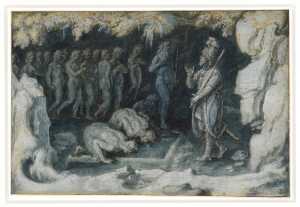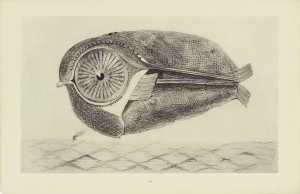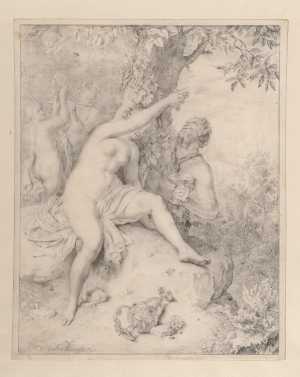Specifications
| Title | Study of a Standing Male Nude with Folded Hands |
|---|---|
| Material and technique | Black chalk, squared |
| Object type |
Drawing
> Two-dimensional object
> Art object
|
| Location | This object is in storage |
| Dimensions |
Height 354 mm Width 197 mm |
|---|---|
| Artists |
Draughtsman:
Jacopo Tintoretto (Jacopo Comin, Jacopo Robusti)
|
| Accession number | I 397 (PK) |
| Credits | Loan Stichting Museum Boijmans Van Beuningen (former Koenigs collection), 1940 |
| Department | Drawings & Prints |
| Acquisition date | 1940 |
| Creation date | in circa 1591-1592 |
| Watermark | none (vH, 7P) |
| Inscriptions | 'G. Tintoretto' (bottom right corner, pen and brown ink), ‘23’ (verso, top right, pencil) |
| Collector | Collector / Franz Koenigs |
| Mark | J. Reynolds (L.2364), F.W. Koenigs (L.1023a) |
| Provenance | from the workshop stock of the artist (died 1594); his son Domenico Tintoretto (died 1635); his brother-in-law and workshop assistant Sebastiano Casser (died 1679); - ; Sir Joshua Reynolds (1723-1792, L.2364)*, London; - ; Art dealer Julius W. Böhler (1883-1966), Lucerne; Franz W. Koenigs (1881-1941, L.1023a), Haarlem, acquired in 1929; D.G. van Beuningen (1877-1955), Rotterdam, acquired with the Koenigs Collection in 1940 and donated to Stichting Museum Boijmans Van Beuningen |
| Exhibitions | none |
| Research |
Show research Italian Drawings 1400-1600 |
| Literature | Von Hadeln 1922, pp. 35, 53, pl. 40; 1923, vol. 1, p. 95, vol. 2, fig. 206; Tietze/Tietze-Conrat 1944, no. 1672; Rossi 1975, p. 55, fig. 184 |
| Material | |
| Object | |
| Technique |
Squared
> Squaring
> Drawing technique
> Technique
> Material and technique
Squared
> Squaring
> Drawing technique
> Technique
> Material and technique
|
| Geographical origin | Italy > Southern Europe > Europe |
| Place of manufacture | Venice > Veneto region > Italy > Southern Europe > Europe |
Do you have corrections or additional information about this work? Please, send us a message
























